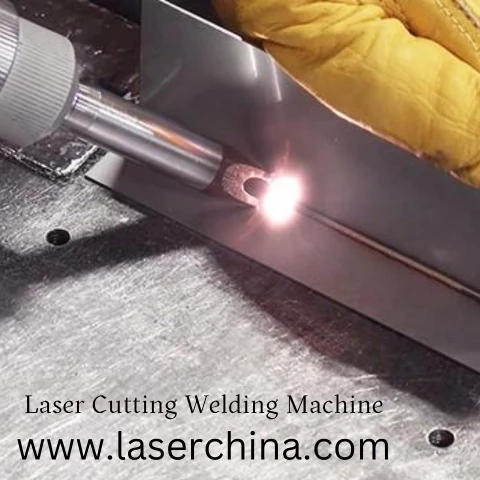Laser welding and cutting machines represent the pinnacle of precision engineering, offering fabricators unparalleled control and efficiency in metal fabrication. By harnessing the power of laser technology, these innovative machines seamlessly integrate welding and cutting capabilities into a single, multifunctional unit. In this comprehensive guide, we'll explore the capabilities of laser welding and cutting machines, their advantages over traditional fabrication methods, and how they're reshaping the future of metalworking.
Unlocking the Potential of Laser Welding and Cutting Machines:
Laser welding and cutting machines utilize high-powered laser beams to join and cut metal components with exceptional precision and accuracy. Unlike conventional welding and cutting methods that rely on heat generated by electrical currents or gas flames, laser machines deliver concentrated energy to the workpiece, resulting in clean, precise welds and cuts without the need for additional filler material. The versatility of laser machines allows fabricators to tackle a wide range of applications, from automotive manufacturing to aerospace engineering.
Advantages of Laser Welding and Cutting Machines:
Precision Fusion: Laser welding and cutting machines offer unparalleled precision and control over the fabrication process, allowing fabricators to achieve intricate welds and cuts with micron-level accuracy. The focused laser beam ensures precise energy delivery, minimizing heat distortion and producing clean, high-quality results.
Versatility in Applications: Laser welding and cutting machines are capable of working with a wide range of materials, including steel, aluminum, stainless steel, and titanium. This versatility makes them suitable for diverse applications across industries such as automotive, aerospace, electronics, and manufacturing.
Efficiency and Speed: Laser machines facilitate rapid welding and cutting speeds, significantly reducing production times compared to traditional methods. The efficient energy transfer and precise control of laser technology enable fabricators to complete projects more quickly without sacrificing quality.
Minimized Material Waste: Laser welding and cutting machines produce narrow heat-affected zones and precise cuts, minimizing material waste and optimizing material usage. This reduces scrap and enhances overall efficiency in the fabrication process.
Seamless Integration: By combining welding and cutting capabilities into a single machine, laser machines streamline the fabrication process and eliminate the need for multiple pieces of equipment. This integration saves space, reduces setup time, and enhances workflow efficiency.
Applications of Laser Welding and Cutting Machines:
Automotive Manufacturing: Laser welding and cutting machines are used in automotive manufacturing for welding body panels, cutting intricate parts, and fabricating exhaust systems. Their precision and efficiency contribute to the production of high-quality vehicles with superior structural integrity.
Aerospace Engineering: Aerospace manufacturers rely on laser welding and cutting machines for fabricating and repairing aircraft components, such as engine parts, structural elements, and interior fittings. The versatility and precision of laser technology make it an indispensable tool for maintaining aircraft safety and performance.
Electronics Assembly: Laser machines play a crucial role in electronics assembly for welding and cutting delicate components, such as circuit boards and microelectronics. Their precision and efficiency ensure reliable connections without damaging sensitive materials.
Metalworking and Fabrication: In metalworking and fabrication, laser welding and cutting machines are used for a variety of applications, including welding sheet metal, cutting complex shapes, and fabricating custom metal parts. Their versatility and speed make them invaluable tools for enhancing productivity and quality in metalworking processes.
Architectural and Decorative Metalwork: Laser technology is also employed in architectural and decorative metalwork for creating intricate designs, sculptures, and custom metal fixtures. The precision and versatility of laser machines allow fabricators to bring artistic visions to life with metal.
Choosing the Right Laser Welding and Cutting Machine:
When selecting a laser welding and cutting machine, consider factors such as power output, beam quality, cooling system, and automation capabilities. Additionally, assess your specific fabrication needs and budget constraints to choose a machine that offers the best value for your investment.
Conclusion:
Laser welding and cutting machines are revolutionizing the metal fabrication industry by providing fabricators with unmatched precision, efficiency, and versatility. Whether performing automotive manufacturing, aerospace engineering, electronics assembly, or architectural metalwork, laser machines empower fabricators to achieve superior results with ease. Embrace the precision fusion of laser technology and unlock new possibilities for metalworking in the 21st century.



